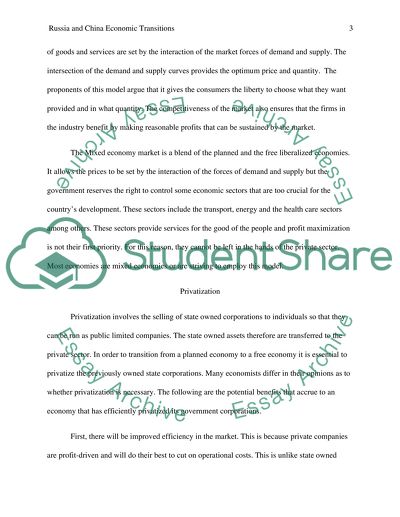Cite this document
(“Russia and China Economic Transitions Essay Example | Topics and Well Written Essays - 1500 words”, n.d.)
Russia and China Economic Transitions Essay Example | Topics and Well Written Essays - 1500 words. Retrieved from https://studentshare.org/macro-microeconomics/1626374-the-transition-from-a-centrally-planned-economy-to-a-free-market-or-a-mixed-economy-involves-state-owned-enterprises
Russia and China Economic Transitions Essay Example | Topics and Well Written Essays - 1500 words. Retrieved from https://studentshare.org/macro-microeconomics/1626374-the-transition-from-a-centrally-planned-economy-to-a-free-market-or-a-mixed-economy-involves-state-owned-enterprises
(Russia and China Economic Transitions Essay Example | Topics and Well Written Essays - 1500 Words)
Russia and China Economic Transitions Essay Example | Topics and Well Written Essays - 1500 Words. https://studentshare.org/macro-microeconomics/1626374-the-transition-from-a-centrally-planned-economy-to-a-free-market-or-a-mixed-economy-involves-state-owned-enterprises.
Russia and China Economic Transitions Essay Example | Topics and Well Written Essays - 1500 Words. https://studentshare.org/macro-microeconomics/1626374-the-transition-from-a-centrally-planned-economy-to-a-free-market-or-a-mixed-economy-involves-state-owned-enterprises.
“Russia and China Economic Transitions Essay Example | Topics and Well Written Essays - 1500 Words”, n.d. https://studentshare.org/macro-microeconomics/1626374-the-transition-from-a-centrally-planned-economy-to-a-free-market-or-a-mixed-economy-involves-state-owned-enterprises.


